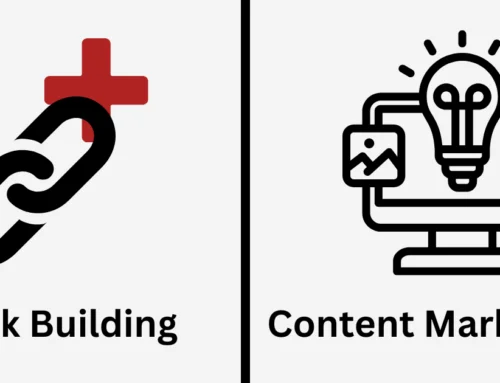Backlinks outreach involves seeking high-quality backlinks to enhance a website’s off-site SEO. In this practice, website owners or business representatives contact other website owners to request backlinks. They often target websites with high domain authority, as Google values these sites highly. The idea is that obtaining backlinks from such websites will significantly boost their off-site SEO. In some cases, website owners may propose writing a guest blog post in exchange for a backlink, while in other instances, they might ask for payment. You can negotiate a deal for a backlink based on your preferences and comfort level.
When Should You Do Backlinks Outreach?
Consider incorporating backlink outreach if you’re serious about enhancing your off-site SEO strategy. While some websites may naturally link to yours, it might not suffice to elevate your rankings. This is where backlink outreach becomes valuable.
Engaging with website owners boasting high domain authority can greatly boost your rankings through their beneficial backlinks. Obtaining backlinks from reputable sites in your niche signals to search engines that your content is high-quality. As these quality websites direct their readers to you, search engines are inclined to rank you higher. Therefore, integrating backlink outreach into your strategy is crucial whenever you aim to enhance your rankings.
Backlinks Outreach Tactics
Ready to give sending an outreach email a shot? Remember these strategies for the highest likelihood of receiving a response and, even better, a backlink.
Be Precise
Consider the person receiving your email. If their bio doesn’t mention anything about link building, they’re likely busy. Plus, you’re not the only one sending cold emails on a Tuesday afternoon; they might have ten similar emails in their inbox.
Don’t ask them tons of questions in a lengthy email chain to understand your interest in a backlink. If you want a “yes,” provide upfront information without rambling. Be direct, specifying the article or content you want a backlink for with relevant anchor text.
Simply asking for a link puts a lot of work on the recipient. They must find a suitable place that fits your content contextually and then edit the website to add your link. A message like “I think [this content] would match in [this section of this article] and can be linked with [this anchor text]” saves them time, making it a simple yes or no instead of figuring out where and how to fit your link.
Read Their Blog
Marketers start their day with about 30 emails saying, “I love your content so much… can you link my article.” Such emails won’t lead to a backlink and will waste everyone’s time.
Invest time in reading competitors’ content and the blogs of potential partner businesses to enhance your outreach skills. If you’ve identified a suitable place for your content, specify it. Highlight any impressive elements, like a well-done infographic or an eye-opening statistic, to show your engagement with their content. Otherwise, the generic “I love your content” line will likely make them roll their eyes.
Get Personal
Trust me, the recipient of your backlink outreach can easily detect a templated email. These are the ones that go like this: “Hello, I just finished reading your blog. It’s so informative. I’d like to partner with your company to boost my content ranking. Can you link my blog?” Such emails are likely to end up in the spam folder.
Instead, try to learn a bit about the person you’re emailing (in a non-creepy way). But remember, don’t get too personal. If you’re not getting a response, avoid adding that person on LinkedIn and sending more outreach there – that’s considered spammy.
Don’t Send Too Many Follow-Ups
Sending one email is good, and a follow-up is okay. However, sending more than that can make you appear needy, annoying, spammy, and unprofessional.
If you’ve followed up and there’s still no response, that’s your answer, and it’s likely a no. Sending another email with a message like, “Hey! Just bumping this to the top of your inbox,” won’t help you get backlinks. The reader is unlikely to respond positively, and excessive follow-ups won’t help you achieve your backlink goal. Maintaining professionalism is key, as constant follow-ups may only lead your emails to end up in the Spam folder.
Final Thoughts Backlinks Outreach
Go out there and do backlink outreach now that you know precisely what it is! Backlink outreach is beneficial to optimize your off-site SEO activities. So, like Resin Art Supply start raising your website’s rankings through the above-described procedure. Please contact us if you need expert help with your outreach efforts. If you intend to buy backlink packages, we can provide you the best quality for affordable prices.
FAQs
- What makes a good backlink?
A good backlink comes from a reputable and relevant source, is embedded in quality content, and uses anchor text that is relevant to your target keywords. It’s important to focus on quality over quantity.
- Is it better to focus on quantity or quality when building backlinks?
Quality should be the priority. A few high-quality backlinks from authoritative sites can significantly impact your SEO more than many low-quality links. Focus on relevance and authority.
- What are some common mistakes to avoid in backlink outreach?
Avoid sending generic outreach emails, not personalizing your messages, ignoring the relevance of the linking site, and using manipulative tactics. It’s essential to build genuine relationships and provide value.
- How can I track the success of my backlink outreach efforts?
Use tools like Google Analytics, Google Search Console, or other SEO analytics tools to monitor changes in your website’s traffic, rankings, and the number of incoming backlinks.
- How long does it take to see results from backlink outreach?
The time to see results can vary. It depends on factors like the quality of your outreach, the responsiveness of the sites you’re reaching out to, and the competitiveness of your niche. Generally, it may take several weeks to months to see significant improvements.


